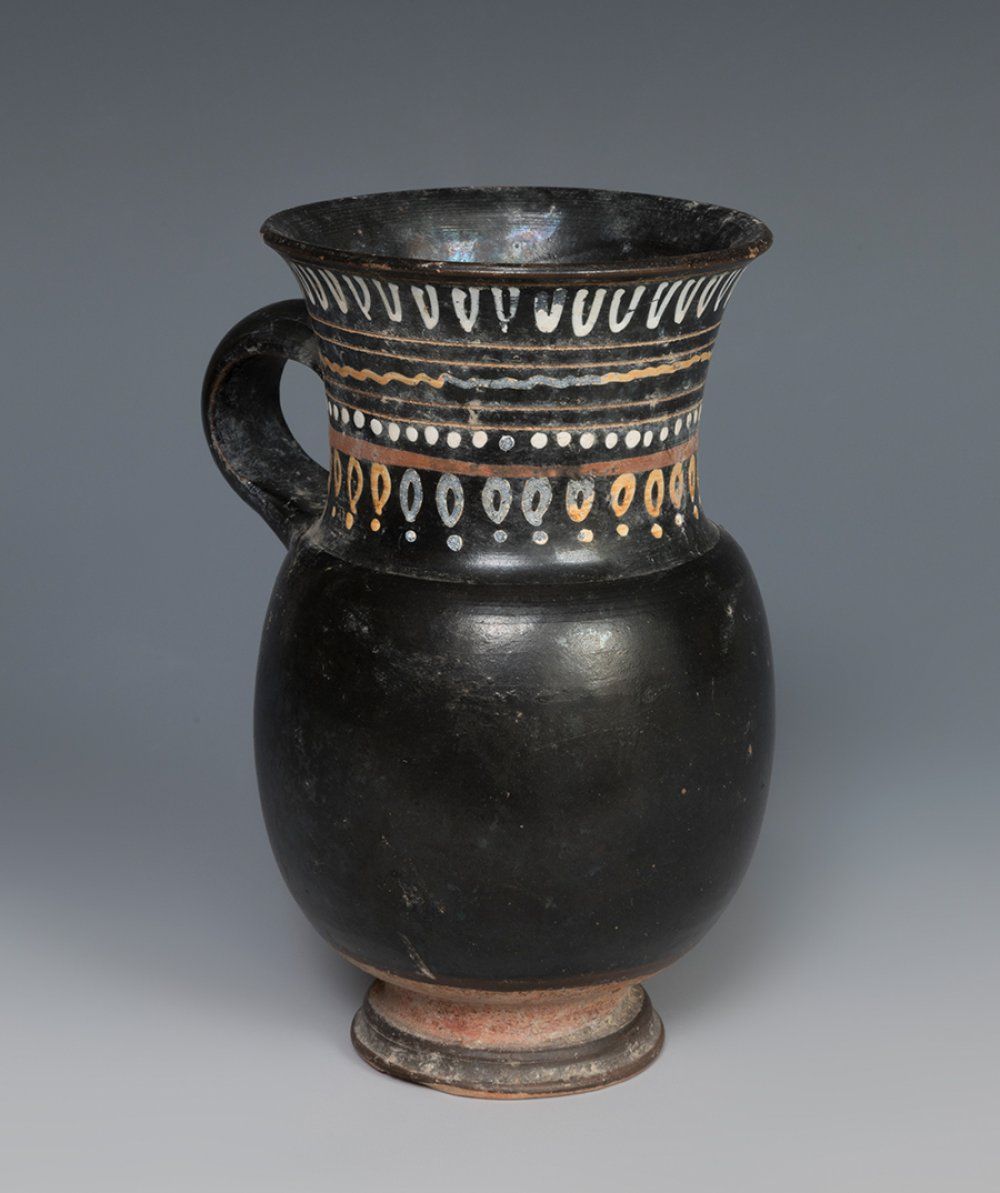Description
Oinochoe; Magna Graecia, Gnathia, 4th c. BC. Polychrome ceramic. It shows surface wear and mineral deposits. Measurements: 13.5 x 9.5 cm. Clover-lipped oinochoe. The oinochoe is a type of Greek pottery used to remove wine from the crater, where it has been watered, before serving it. It is characterised by a single handle and is classified according to the shape of the mouth and belly. It is decorated with a series of lines in white, red and yellowish slip on a black background. Red-figure ware was one of the most important figurative styles of Greek pottery. It replaced the previous predominant style of black-figure ware within a few decades. The technical basis was the same in both cases, but in red-figure ware the colouring is reversed, with the figures highlighted against a dark background, as if illuminated by a theatrical light, in a more natural pattern. Gnathia vases are a type of pottery belonging to the ancient Apulian vase-painting of the 4th century BC. They are named after the ancient city of Gnathia (now Egnazia) in eastern Apulia. The first examples of the style were discovered there in the mid-19th century. Its production began in Apulia around 370/360 BC, in parallel with the local version of the red-figure style that developed tendencies towards polychromy at that time. Typical of Gnathia vases is the application of different paints directly on the body of the glazed vase.
157
Oinochoe; Magna Graecia, Gnathia, 4th c. BC. Polychrome ceramic. It shows surface wear and mineral deposits. Measurements: 13.5 x 9.5 cm. Clover-lipped oinochoe. The oinochoe is a type of Greek pottery used to remove wine from the crater, where it has been watered, before serving it. It is characterised by a single handle and is classified according to the shape of the mouth and belly. It is decorated with a series of lines in white, red and yellowish slip on a black background. Red-figure ware was one of the most important figurative styles of Greek pottery. It replaced the previous predominant style of black-figure ware within a few decades. The technical basis was the same in both cases, but in red-figure ware the colouring is reversed, with the figures highlighted against a dark background, as if illuminated by a theatrical light, in a more natural pattern. Gnathia vases are a type of pottery belonging to the ancient Apulian vase-painting of the 4th century BC. They are named after the ancient city of Gnathia (now Egnazia) in eastern Apulia. The first examples of the style were discovered there in the mid-19th century. Its production began in Apulia around 370/360 BC, in parallel with the local version of the red-figure style that developed tendencies towards polychromy at that time. Typical of Gnathia vases is the application of different paints directly on the body of the glazed vase.
You may also like
